Church of the Nativity of the Blessed Virgin Mary (Priozersk)
10 photo with description22.07.2020 02:42
22.07.2020 02:42
Andrey Panevin

Church of the Nativity of the Blessed Virgin Mary on the main square of Priozersk. The temple was built in 1838 - 1847, designed by the architect David Ivanovich Visconti (Louis Tullius Joachim Visconti) in honor of the liberation of the city from the Swedish occupation on September 8, 1710 by Russian troops led by General R.V. Bruce. Local merchant Nikolai Lisitsin headed the construction of the cathedral.
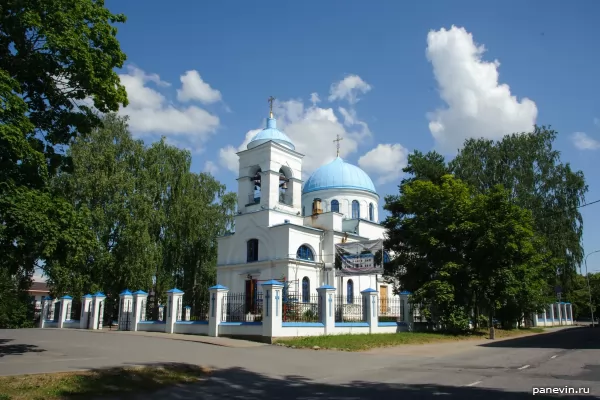
Cathedral of the Nativity of the Blessed Virgin Mary, courtyard of the Konevsky monastery.
The church was built to replace the dilapidated one. The plans for the facades of the Church of the Nativity of the Blessed Virgin Mary were ready by May 1838. And just this year Konstantin Andreevich Ton published an album of drawings of stone religious buildings, which became the starting point for the revival of the forms of ancient Russian architecture. This style was later called "Byzantine-Russian" or by the name of its author - "Tonovskiy".
Naturally, Louis Visconti was well aware of the Empire, the official architectural style of the First Empire. By the way, he came to Russia from the defeated France, together with the troops who returned from the victorious campaign abroad. But the standard designs of churches developed by Ton were obligatory for architects, who had to take into account their shape and style when erecting stone religious buildings throughout the territory of the Russian Empire. Visconti and took into account. For example, the dome of the Nativity Church, slightly pointed to the top, reminiscent of the helmet of an ancient Russian knight. And according to the rules of the Empire style, it should be rounded. And so - in many architectural elements of the church. Repeating the shape of the dome, the window openings of the bell tower ringing platform, arched recesses above all the entrances to the church (western, northern and southern facades) are elongated and slightly pointed to the top.

Catholic crosses were surprising on the fence posts (Orthodox Christians should have two more crossbeams). Nevertheless, this temple has always been Orthodox.
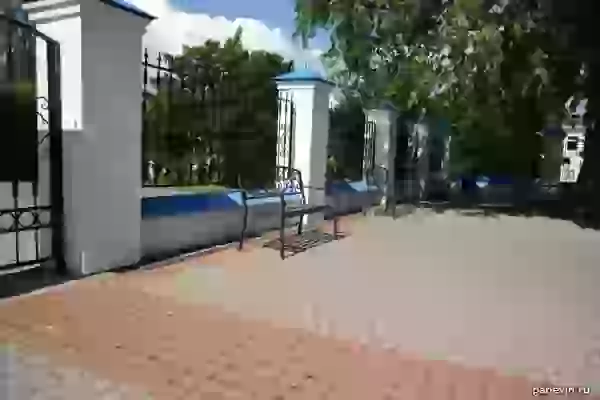
The territory of the temple is perfectly landscaped, the courtyard is tiled, benches are installed.
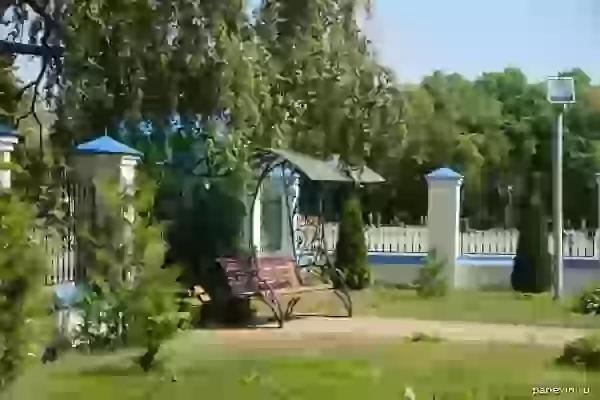
Several benches even with awnings.
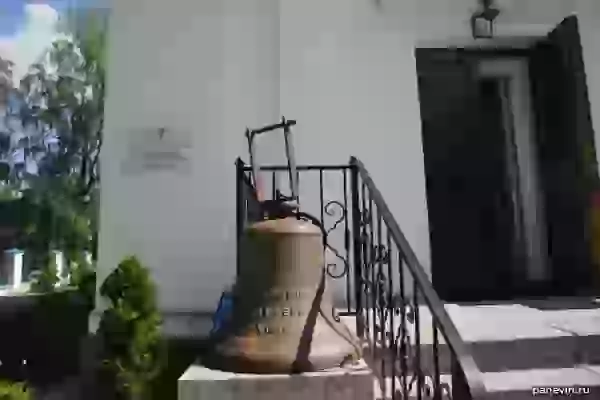
An old bell at the entrance to the temple. Judging by the inscription - from the Finnish city of Tampere.

Brushes for cleaning shoes. In Finland, this is often met, in Russia I saw it for the first time. Affected by the proximity of the northern neighbor.
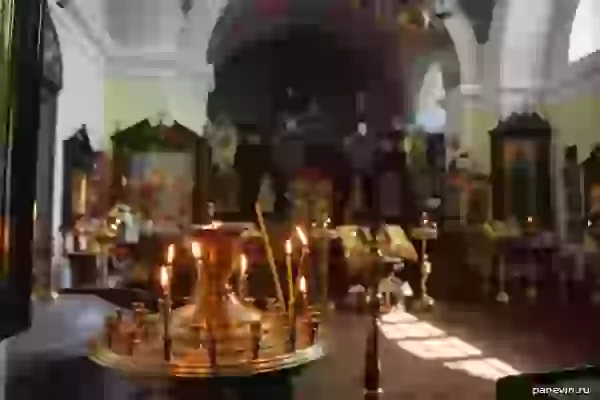
Candles in the temple.
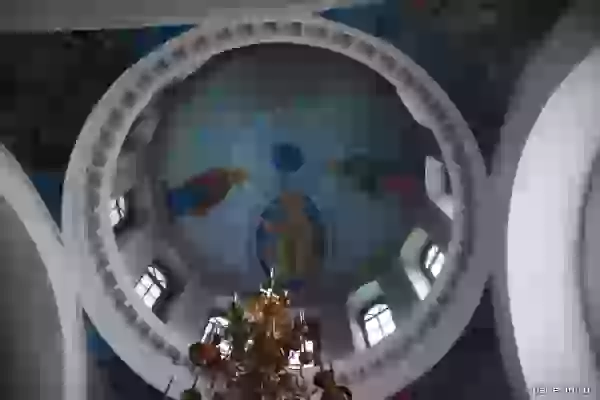
Painting under the dome.
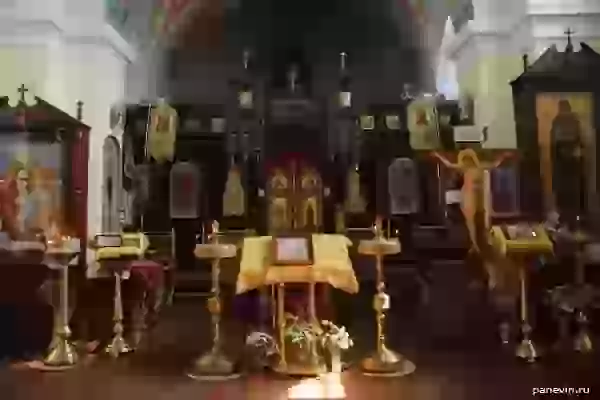
Altar. There was no one in the cathedral except me, so I calmly took a picture without disturbing anyone.
September 8 1710 is the day of the celebration of the Nativity of the Most Holy Theotokos, in honor of which the temple got its name. In 1940 the Church of the Nativity of the Blessed Virgin Mary was closed, in 1992 it was returned to believers, and in 1995 transferred to the courtyard of the Konevsky monastery.

Monument to Peter I at the apse of the Cathedral of the Nativity of the Virgin. The original granite stele was crowned with a bust of Peter by the sculptor Verbel. The bronze bust was lost in 1918. The new bust and coat of arms of Kexholm were created by sculptor V.E. Gorev and installed on a pedestal in 1976.
Base inscription:
Peter the Great
Life Guards Kexholm Emperor of the Austrian Regiment
In commemoration of the 200th anniversary of its foundation and the return of the ancestral fortress.

Cathedral of the Nativity of the Blessed Virgin Mary, courtyard of the Konevsky monastery.
The church was built to replace the dilapidated one. The plans for the facades of the Church of the Nativity of the Blessed Virgin Mary were ready by May 1838. And just this year Konstantin Andreevich Ton published an album of drawings of stone religious buildings, which became the starting point for the revival of the forms of ancient Russian architecture. This style was later called "Byzantine-Russian" or by the name of its author - "Tonovskiy".
Naturally, Louis Visconti was well aware of the Empire, the official architectural style of the First Empire. By the way, he came to Russia from the defeated France, together with the troops who returned from the victorious campaign abroad. But the standard designs of churches developed by Ton were obligatory for architects, who had to take into account their shape and style when erecting stone religious buildings throughout the territory of the Russian Empire. Visconti and took into account. For example, the dome of the Nativity Church, slightly pointed to the top, reminiscent of the helmet of an ancient Russian knight. And according to the rules of the Empire style, it should be rounded. And so - in many architectural elements of the church. Repeating the shape of the dome, the window openings of the bell tower ringing platform, arched recesses above all the entrances to the church (western, northern and southern facades) are elongated and slightly pointed to the top.
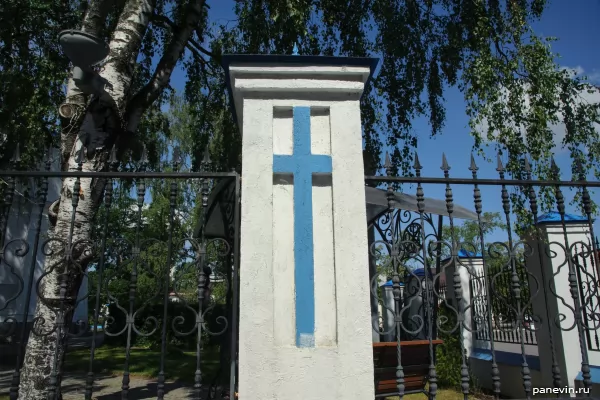
Catholic crosses were surprising on the fence posts (Orthodox Christians should have two more crossbeams). Nevertheless, this temple has always been Orthodox.
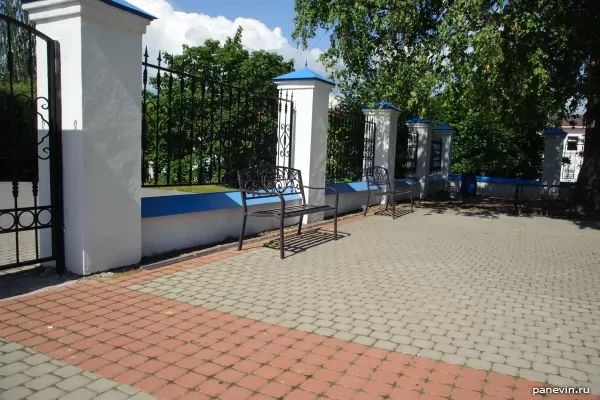
The territory of the temple is perfectly landscaped, the courtyard is tiled, benches are installed.
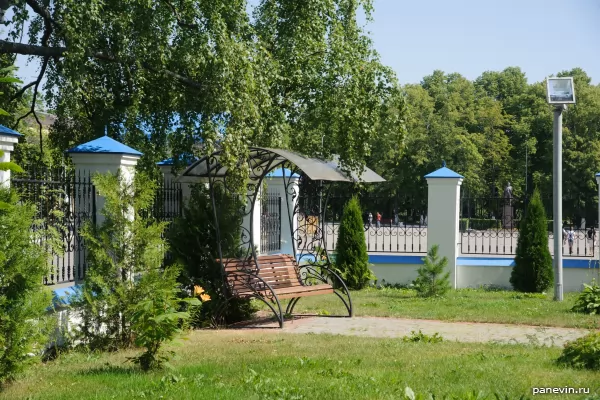
Several benches even with awnings.
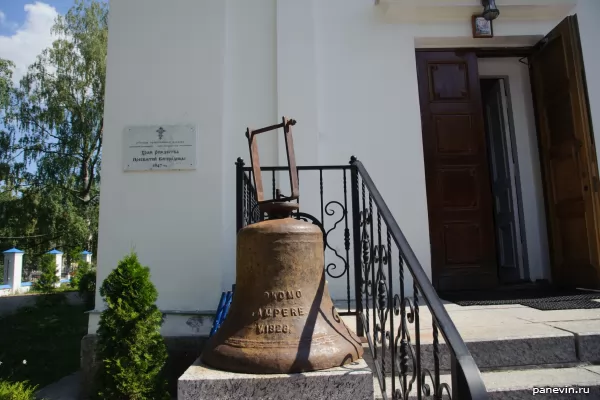
An old bell at the entrance to the temple. Judging by the inscription - from the Finnish city of Tampere.
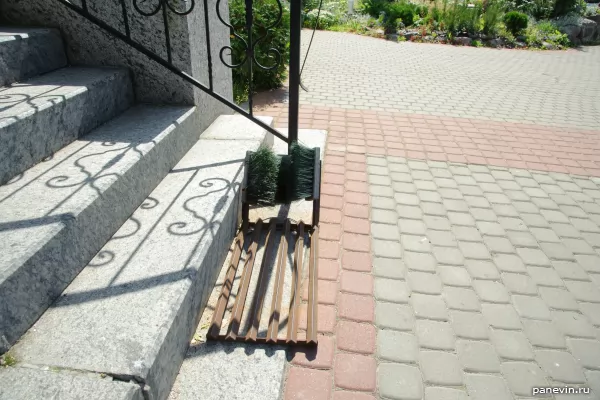
Brushes for cleaning shoes. In Finland, this is often met, in Russia I saw it for the first time. Affected by the proximity of the northern neighbor.

Candles in the temple.

Painting under the dome.
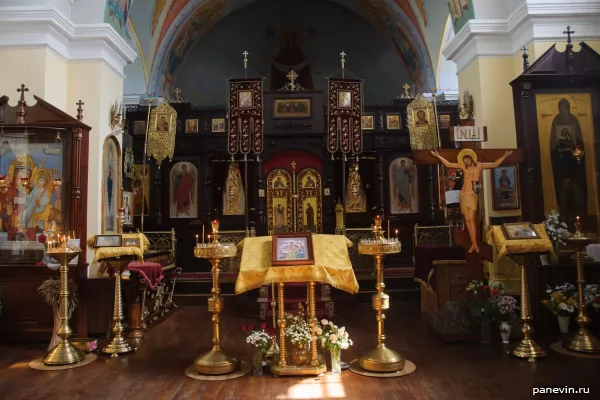
Altar. There was no one in the cathedral except me, so I calmly took a picture without disturbing anyone.
September 8 1710 is the day of the celebration of the Nativity of the Most Holy Theotokos, in honor of which the temple got its name. In 1940 the Church of the Nativity of the Blessed Virgin Mary was closed, in 1992 it was returned to believers, and in 1995 transferred to the courtyard of the Konevsky monastery.

Monument to Peter I at the apse of the Cathedral of the Nativity of the Virgin. The original granite stele was crowned with a bust of Peter by the sculptor Verbel. The bronze bust was lost in 1918. The new bust and coat of arms of Kexholm were created by sculptor V.E. Gorev and installed on a pedestal in 1976.
Base inscription:
Peter the Great
Life Guards Kexholm Emperor of the Austrian Regiment
In commemoration of the 200th anniversary of its foundation and the return of the ancestral fortress.
Share:
Themes: attractions 134 byzantine revival 2 churches and cathedrals 24 eclecticism 3 photos 417 Priozersk 2 travel 286
← Blog
tserkov_rozhdestva_presvyatoy_bogoroditsi
blog






